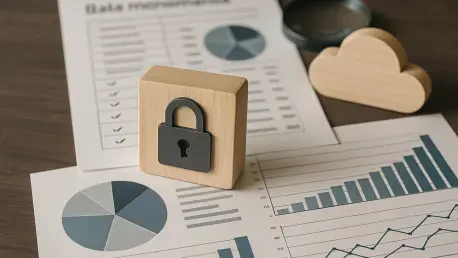In today’s world, where data security is paramount, understanding threats to critical systems is essential. Rupert Marais, an expert in endpoint and device security, sheds light on recent vulnerabilities discovered in SAP GUI, a crucial interface for many enterprises. These weaknesses, if exploited, could expose sensitive information. Let’s dive into this vital discussion to understand the threats and how organizations can fortify their defenses.
Can you explain the vulnerabilities CVE-2025-0055 and CVE-2025-0056 in SAP GUI and how they were discovered?
The vulnerabilities CVE-2025-0055 and CVE-2025-0056 in SAP GUI pertain to how input history is stored in the user interface. Pathlock and Fortinet researchers discovered these flaws, reporting them to SAP. Essentially, these vulnerabilities arose because of weak encryption protocols used in storing user inputs, making it possible for attackers to access sensitive information stored locally.
What type of data could potentially be accessed by an attacker exploiting these vulnerabilities?
The type of data that attackers could access varies greatly depending on the user’s job function. However, it could include highly sensitive information like user IDs, Social Security numbers, credit card details, and bank account numbers. The nature of this information makes it extremely valuable to threat actors aiming to conduct further malicious activities.
How does the SAP GUI input history feature work, and why is it considered a vulnerability in this context?
The SAP GUI input history feature is designed to enhance usability by saving data users frequently enter, reducing repetitive input. However, this feature becomes a vulnerability because it stores personal and potentially sensitive information without robust encryption, exposing it to potential exploitation by attackers.
What role does the XOR-based encryption scheme play in the vulnerability, and why is it considered weak?
XOR-based encryption is used in SAP GUI to secure saved user inputs. The weakness lies in its use of the same key in a repeated pattern across entries, which is easily reversed. This allows attackers with knowledge of a single entry to decrypt other stored inputs, effectively bypassing the security measures intended to protect sensitive data.
How do the vulnerabilities in SAP GUI for Windows differ from those in SAP GUI for Java?
For SAP GUI for Windows, the vulnerability stems from weak XOR encryption. In contrast, the SAP GUI for Java versions further worsen this situation by storing all input history entries entirely unencrypted as Java serialized objects. This difference in data protection levels presents varying risks across platforms.
What is the significance of storing Java serialized objects unencrypted in SAP GUI for Java?
Storing Java serialized objects unencrypted means that anyone with access to a vulnerable system can easily extract sensitive historical data. This lack of encryption provides an open door for attackers, who can extract and potentially misuse this information for malicious intent with minimal effort.
What are some potential ways an attacker might gain initial access to a system running a vulnerable SAP GUI instance?
Attackers could gain initial access via several methods, such as phishing, exploiting malware, or conducting Human Interface Device (HID) injection attacks, where they might use a malicious USB to perform actions on a target system. Once initial access is obtained, they can then target vulnerabilities in the GUI to extract data.
Could you explain the related flaw CVE-2025-0059 in SAP NetWeaver Application Server ABAP and how it connects to the other vulnerabilities?
CVE-2025-0059 is another vulnerability discovered in SAP NetWeaver ABAP, linked by the same underlying weaknesses in data protection. It highlights a broader structural issue across SAP products. Although not yet patched like the other vulnerabilities, it poses a similar risk of unauthorized data access.
Why does SAP recommend disabling the input history functionality, and what more should organizations do to protect themselves?
SAP recommends disabling the input history function to prevent potential exploitation of stored data. Beyond this, organizations should delete existing input history files, follow SAP’s mitigation strategies, and conduct regular system audits to ensure vulnerabilities are identified and addressed swiftly.
How can the extracted data from these vulnerabilities be weaponized by attackers?
Attackers can use the extracted data to gather contextual information about users and systems, enabling them to conduct spear phishing, influence escalation scenarios, or gain unauthorized access across systems. This information can fuel further attacks and breaches, extending the damage beyond initial exploitation.
What steps can organizations take to mitigate these vulnerabilities and secure their systems?
Organizations should patch their SAP GUI systems with the updates provided in January 2025, disable input history storage, and delete any existing sensitive data from these files. Additionally, implementing robust access controls and regular system audits can help in identifying and rectifying potential security lapses.
Why is it critical to delete existing input history files across all SAP GUI versions?
Deleting existing input history files is essential because these files may contain sensitive data that can be easily accessed and exploited due to weak encryption or lack thereof. Their removal helps to eliminate the risk of this sensitive information being exposed to threat actors.
How does poor local data storage practice contribute to the risk posed by these vulnerabilities?
Poor local data storage practices, such as weak encryption and unencrypted sensitive data, significantly amplify the risk. Attackers can readily access and exploit this inadequately protected information, leading to potential breaches and data theft that could have far-reaching consequences for organizations.
Can you discuss the potential impact on organizations if an attacker successfully exploits these vulnerabilities?
Successful exploitation could result in unauthorized access to confidential information, leading to financial losses, reputational damage, and legal liabilities. The extracted data offers a foothold for attackers to conduct further malicious activities, potentially causing long-term setbacks for affected organizations.
What advice would you give to organizations to ensure regular audits of their system environments?
Regular audits should be deeply integrated into organizational processes to uncover and mitigate potential vulnerabilities. I recommend employing a combination of automated tools and manual assessments to stay proactive in identifying security flaws, ensuring compliance with best practices, and maintaining robust incident response plans.









